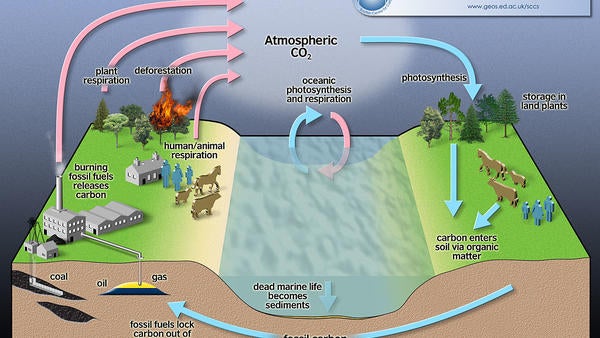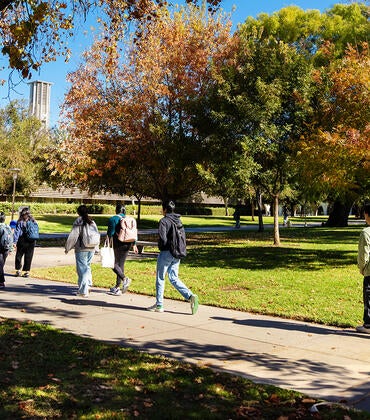
RIVERSIDE, Calif. (www.ucr.edu) – Tropical trees in the Amazon Rainforest may be more drought resistant than previously thought, according to a new study by researchers at the University of California, Riverside.
That’s good news, since the Amazon stores about 20 percent of all carbon in the Earth’s biomass, which helps reduce global warming by lowering the planet’s greenhouse gas levels.
In a study published Monday in the journal New Phytologist, a team led by Louis Santiago, a professor of Botany & Plant Sciences, found that tropical trees in Paracou, French Guiana have developed an unusual way to protect themselves from damage caused by drought. The trees make use of an abundance of living cells around their xylem to conserve and redistribute water in drought conditions. The xylem (the scientific name for wood) is the non-living tissue of a plant that transports water and nutrients from the soil to the stems and leaves.
Santiago said studying drought in one of the wettest places on Earth might seem counterintuitive, but recent droughts, including record heat and drought during the 2015-16 El Niño, are already threatening the Amazon Rainforest. If trees die because of those droughts, the carbon they store will be released into the atmosphere, where it will further exacerbate global warming.
“Tropical forests act as a sink that reduces global greenhouse gases. However, if those plants die and decompose, they can become a source of atmospheric carbon. Because of its sheer size, what happens in the Amazon affects the whole world,” said Santiago, who also holds an appointment at the Smithsonian Tropical Research Institute.
When plants absorb water through their roots, they use their xylem to transport water and nutrients through the plant. As less water becomes available, a plant must “suck” harder to draw water from its roots to its leaves. At some point during this struggle, air bubbles can be pulled up into the xylem causing embolisms (analogous to those to those that form in the human vascular system). These embolisms block the flow of water, leading to a phenomenon called hydraulic failure. The more readily a plant or tree develops hydraulic failure, the more susceptible it is to drought.
To study how Amazonian trees responded to drought, Santiago’s team plucked branches from the tops of trees in French Guiana’s Paracou Research Station and studied them in a lab to determine how readily they develop hydraulic failure, which is a function of their physics, including the dimensions of their plumbing and the pressure their vessels can withstand.
“We realized in 2013 that there was almost no data on the drought resistance of Amazonian canopy trees, and several recent droughts raised the question of how these trees would fare if climate change caused increased anomalies in precipitation.”
The group’s initial findings weren’t positive, because commonly used experiments indicated that the tropical trees were much more susceptible to hydraulic failure than temperate trees.
Further experiments revealed a glimmer of hope: tropical trees have developed another way to survive during drought. A layer of live “parenchyma” cells that surrounds the xylem helps tropical trees by storing water and mediating the osmotic pressure so that water can be redistributed to where it is most needed.
“Tropical trees, compared those in temperate forests, have three times as many living cells surrounding the xylem that can facilitate these processes, which are not observed by the typical experiments we conduct to determine how vulnerable a plant is to droughts.”
Santiago said the researchers are now expanding their study to include additional tree species in Panama and Brazil.
“Our overall goal in modeling drought resistance is to be able to predict what kind of change in rainfall would trigger death. Fortunately, our experiments so far suggest that tropical trees may be more drought resistant that previously thought, and that they use a really unique way to protect themselves.” Although, Santiago adds: “Continued warming of the planet would eventually cause widespread tree mortality.”
The title of the paper is “Coordination and trade-offs among hydraulic safety, efficiency and drought avoidance traits in Amazonian rainforest canopy tree species.” Santiago and Mark De Guzman, a recent doctoral graduate in Santiago’s lab, were first authors on the paper. Other contributors were Jacob Vogenberg and Max Brodie from UCR; Christopher Baraloto from Florida International University; Bruno Hérault from UMR Ecologie des forêts de Guyane in France; Claire Fortunel from UCLA; and Damien Bonal Université de Lorraine in France.




